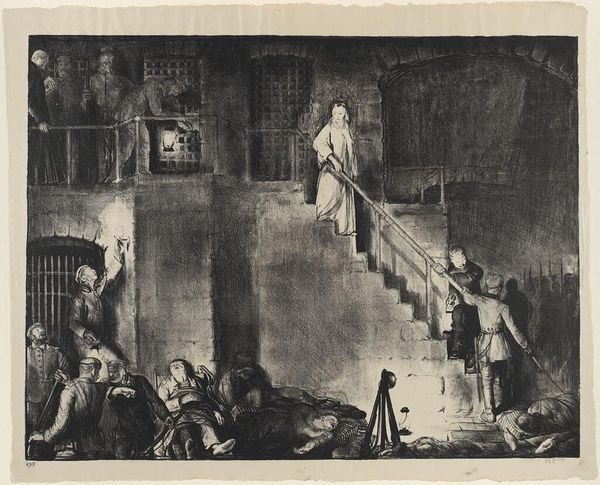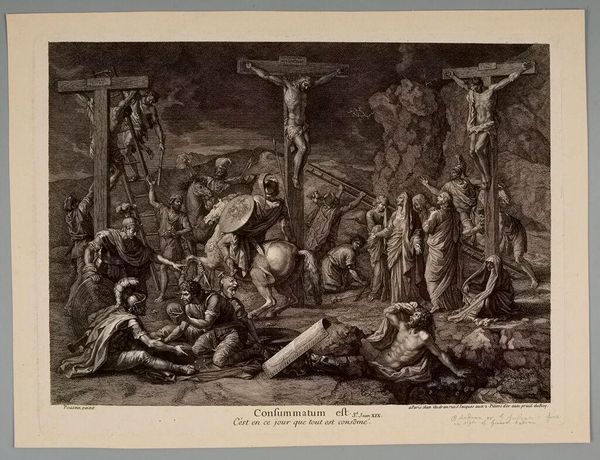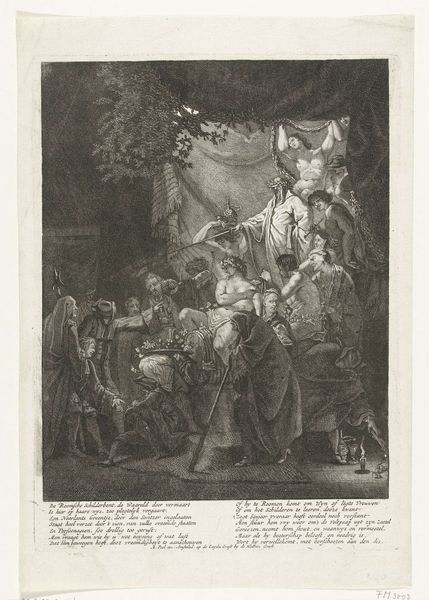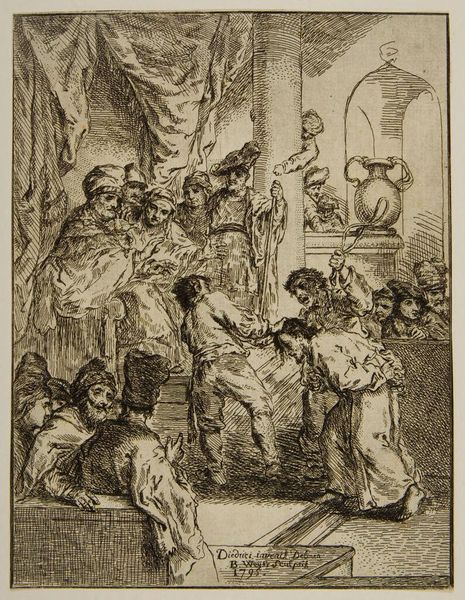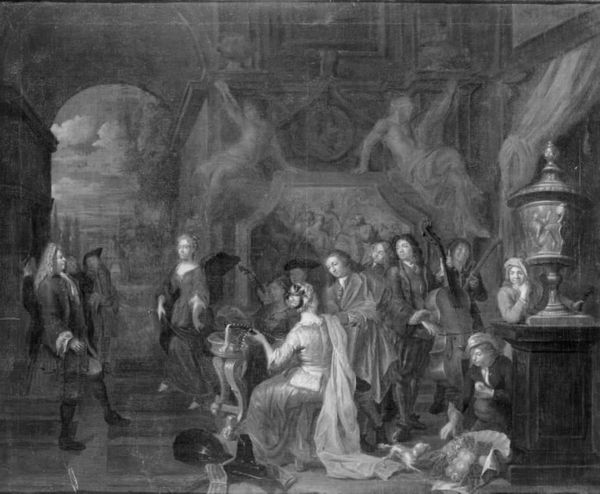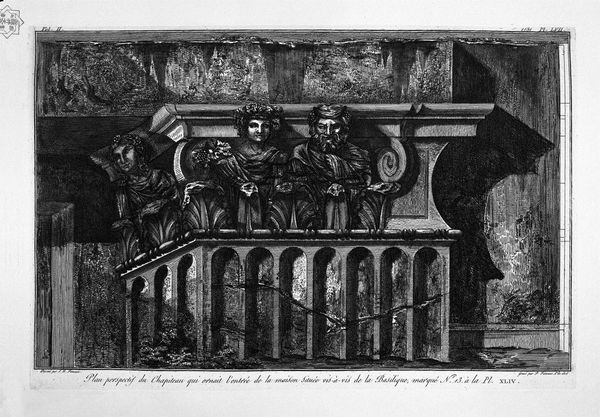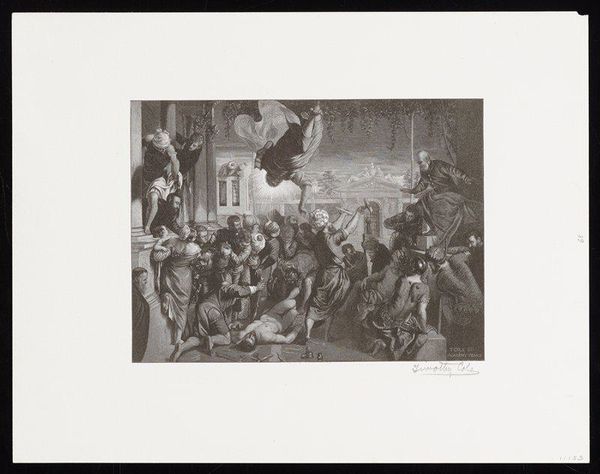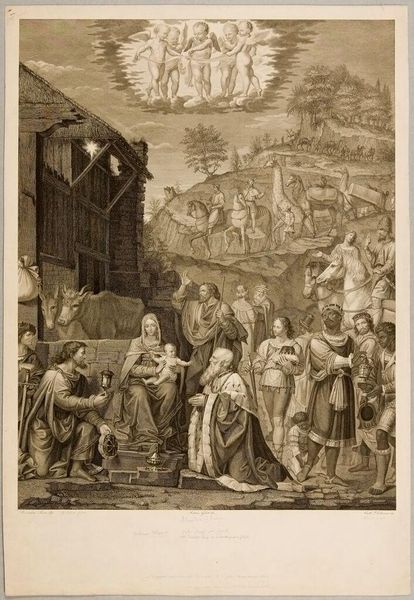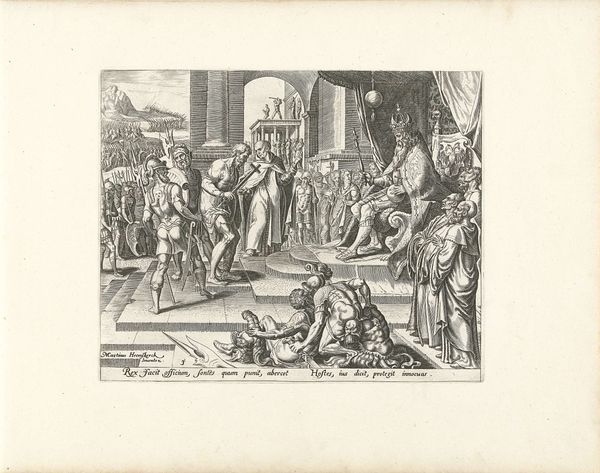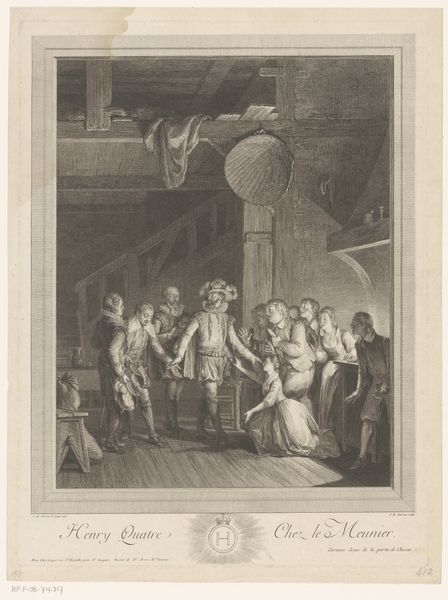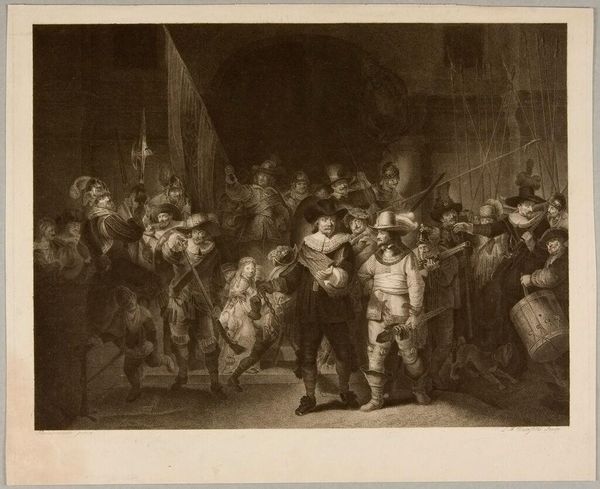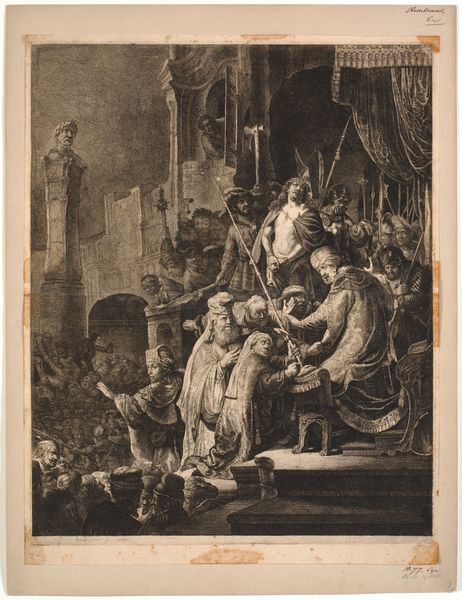
Copyright: CC0 1.0
Curator: George Bellows gives us "The Death of Edith Cavell." The dramatic chiaroscuro grabs you, doesn’t it? Editor: Indeed. The stark contrast immediately creates a somber, almost theatrical mood. The lines are so raw, evoking a sense of unease. Curator: Bellows was deeply moved by Cavell's execution for aiding Allied soldiers during World War I. It's a powerful statement against war's brutality, especially considering gender dynamics. Editor: I see the composition reinforcing that narrative. Cavell is positioned at the top of the stairs, a beacon of light amidst the oppressive darkness of the prison. The stark vertical lines add to the tension. Curator: Absolutely. This work exposes the institutional violence of the era. Bellows is reminding us that neutrality and humanitarianism were not always respected, particularly when women challenged wartime structures. Editor: And the deliberate use of shadow obscures the faces of the figures below, dehumanizing them, turning them into instruments of the state. It's a sophisticated, yet disturbing use of formal elements. Curator: This piece truly forces us to confront uncomfortable truths about power, gender, and moral courage during wartime. Editor: A study in contrasts and visual rhetoric that elevate the work, solidifying its place in art history.
Comments
No comments
Be the first to comment and join the conversation on the ultimate creative platform.
